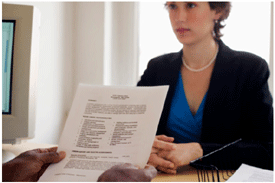 Retail shelving along with store design has a huge impact on shoplifting losses. Typically a shoplifter likes and needs privacy even if only for a moment. So why not keep that in mind when designing or remodeling your store. Your shelving and isles can work for you by simply considering several factors.
Retail shelving along with store design has a huge impact on shoplifting losses. Typically a shoplifter likes and needs privacy even if only for a moment. So why not keep that in mind when designing or remodeling your store. Your shelving and isles can work for you by simply considering several factors.
Shelving height can be critical. It may be tempting to have shelves go all the way to the ceiling. However, this creates cover for shoplifters. They feel more secure when they cannot be seen. Shelving that allows your staff to see over and keep track of customers make a shoplifter uncomfortable.
Do not create dead sports. Shoplifters will pick up your merchandise and head for “dark areas” of your store. Areas when they can remove packaging, pricing… and have time to conceal it.
Speaking of lighting. Make sure that you align lighting with your isles. Not only will that encourage sales but again, adequate lighting will not allow shoplifters to get comfortable.
You should also put some thought into your end cap displays. Move small or high value merchandise to end caps that are easily seen by your staff. Likewise place merchandise that is larger and lesser value on end caps that face away from staff.
When designing your stores’ layout consider the foot traffic of staff, customers and shoplifters. We want retail staff and even back office personnel to routinely visit all areas of the store. It may be tempting to have a single direct path but that could leave a number of areas rarely visited by staff throughout the day. That is a gold mine for shoplifters. They watch staff traffic and will naturally migrate to areas less traveled.
Likewise you want your good customers to assist you with shoplifting prevention. They can do this in two ways. If your store is laid out in such a way that keeps legitimate customers spread out and in all areas of the store not just focused in one or two places, then they help you with removing privacy from the shoplifter.
Another technique to shut off shoplifters is to make your legitimate customers into your store security, without the customer even knowing it. You can use a PA system or even radios that can be heard by the public (not on a headset) for this.
To do this make a “ghost call”. If you suspect that shoplifters are in the store then on the PA system say “security to section 3…,” then watch what happens! Legitimate customers will not care, they are not in the mindset to steal. They are focused on what they are looking at. At most they may look up and around, then simply go back to what they were doing. Shoplifters on the other hand will react differently. By calling security to an “area” that is not marked or corresponds to anything such as isle number… the shoplifter does not know what is going on. And that legitimate customer that then happens to come into the isle or area they are in now becomes an undercover store detective regardless of age, gender…. You can even assign ghost calls to staff as a responsibility to be made randomly every hour or so.
All of this because of a little forethought on your part and shelving design help.
Bill Bregar is a 30+ year loss prevention expert. Bill was the Director of Loss Prevention for several major retailers and is now the President of Loss Prevention Systems, Inc. LPSI specializes in Checkpoint Systems anti-shoplifting equipment. He has personally apprehended many shoplifters and over 2300 employees stealing from their employers. Bill can be reached at: [email protected] or at 770-426-0547
 Growing up did you ever do something dumb and your mom or your dad would ask you, “What were you thinking?” Having lived in south for the past 32 years I have learned of the local colloquialism when someone does something stupid, “Didn’t your momma teach you better?” Unfortunately, as a young boy I did a lot of dumb things making me wonder if my brain developed a lot later in life than most people. For example, I had a propensity for walking behind batters warming up to go to the plate for my father’s teen baseball teams. I ended up with more than one fat lip from my stupidity…obviously not learning the lesson the first time. I had a fascination with electrical outlets and wires and old rotary dial telephones…I won’t go into details but no they didn’t work when the wires were pushed into the outlet, I was not injured but I had one very busy guardian angel.
Growing up did you ever do something dumb and your mom or your dad would ask you, “What were you thinking?” Having lived in south for the past 32 years I have learned of the local colloquialism when someone does something stupid, “Didn’t your momma teach you better?” Unfortunately, as a young boy I did a lot of dumb things making me wonder if my brain developed a lot later in life than most people. For example, I had a propensity for walking behind batters warming up to go to the plate for my father’s teen baseball teams. I ended up with more than one fat lip from my stupidity…obviously not learning the lesson the first time. I had a fascination with electrical outlets and wires and old rotary dial telephones…I won’t go into details but no they didn’t work when the wires were pushed into the outlet, I was not injured but I had one very busy guardian angel. Loss Prevention Officers and Managers catch shoplifters and dishonest employees. That is a common perception and in some stores it may be a true picture of what Loss Prevention departments do, with the additional caveat that they may have uniformed people who conduct receipt checks. If this is all that the department does it can be hard to sell store managers on the value of having them on staff if the budget for them comes directly from the store. It is even more difficult for small, independent retailers to justify hiring a Loss Prevention Officer although if the store is in a high crime area they may contract a security guard. There was a time when there was an “us versus them” mindset between store managers and Loss Prevention teams. Over time some larger companies have focused their Loss Prevention teams more on operational issues. For example, I worked for a company that had Loss Prevention conduct food product out of date audits. Their position was that this was a safety issue so it fell to the Loss Prevention team. I had no problem doing the audits, but as I looked at the amount of out of date items I was finding I had to question what the freight team was doing when they were stocking. Who was auditing their work because there were a lot of FIFO (First In First Out) issues I was identifying that were causing out of date problems.
Loss Prevention Officers and Managers catch shoplifters and dishonest employees. That is a common perception and in some stores it may be a true picture of what Loss Prevention departments do, with the additional caveat that they may have uniformed people who conduct receipt checks. If this is all that the department does it can be hard to sell store managers on the value of having them on staff if the budget for them comes directly from the store. It is even more difficult for small, independent retailers to justify hiring a Loss Prevention Officer although if the store is in a high crime area they may contract a security guard. There was a time when there was an “us versus them” mindset between store managers and Loss Prevention teams. Over time some larger companies have focused their Loss Prevention teams more on operational issues. For example, I worked for a company that had Loss Prevention conduct food product out of date audits. Their position was that this was a safety issue so it fell to the Loss Prevention team. I had no problem doing the audits, but as I looked at the amount of out of date items I was finding I had to question what the freight team was doing when they were stocking. Who was auditing their work because there were a lot of FIFO (First In First Out) issues I was identifying that were causing out of date problems. Police hear it all the time when issuing tickets, “Need to make your quota for the month?” Usually it is a false question with a false premise that has been perpetuated over time. While there may be some police departments that set quotas they are the exception rather than the rule. Loss Prevention departments go through similar problems. Some people think that Loss Prevention staffs are out to rack up numbers any way they can get them. Most L.P. professionals are simply trying to catch shoplifters who are stealing and they want to apprehend dishonest employees to stop theft, prevent shrinkage and it can serve as a notice to other employees that theft won’t be tolerated. For some L.P. personnel there is a perceived pressure to “get more shoplifters” and in other cases it is real. For the retailer that is not able to pay for a Loss Prevention Staff, their concern is simply to drive the bad guys somewhere else and get rid of a crooked employee before they cause too much damage. Sometimes this is done using electronic article surveillance equipment from a company like Checkpoint Systems. They don’t feel the same pressure to “apprehend” but there is a sense of urgency in minimizing theft opportunities (how to do that becomes another matter).
Police hear it all the time when issuing tickets, “Need to make your quota for the month?” Usually it is a false question with a false premise that has been perpetuated over time. While there may be some police departments that set quotas they are the exception rather than the rule. Loss Prevention departments go through similar problems. Some people think that Loss Prevention staffs are out to rack up numbers any way they can get them. Most L.P. professionals are simply trying to catch shoplifters who are stealing and they want to apprehend dishonest employees to stop theft, prevent shrinkage and it can serve as a notice to other employees that theft won’t be tolerated. For some L.P. personnel there is a perceived pressure to “get more shoplifters” and in other cases it is real. For the retailer that is not able to pay for a Loss Prevention Staff, their concern is simply to drive the bad guys somewhere else and get rid of a crooked employee before they cause too much damage. Sometimes this is done using electronic article surveillance equipment from a company like Checkpoint Systems. They don’t feel the same pressure to “apprehend” but there is a sense of urgency in minimizing theft opportunities (how to do that becomes another matter).
 In the United States alone, there are over half a million shoplifting incidents everyday. The losses are in the billions and the deaths associated to shoplifting incidents are numerous. Whether you have a store policy where every shoplifter is prosecuted, or whether your store prosecutes only if the amount stolen is over a hundred dollars, the policies and procedures have to be crystal clear for every employee that works in your store.
In the United States alone, there are over half a million shoplifting incidents everyday. The losses are in the billions and the deaths associated to shoplifting incidents are numerous. Whether you have a store policy where every shoplifter is prosecuted, or whether your store prosecutes only if the amount stolen is over a hundred dollars, the policies and procedures have to be crystal clear for every employee that works in your store. If you believe that you can outsell your cash or inventory losses due to theft, you probably won’t be in business for long. Or if you do survive, you are no way living up to the margins you deserve. In my 35+ years of loss prevention particularly helping medium to small retailers, I have heard this more times than I can believe.
If you believe that you can outsell your cash or inventory losses due to theft, you probably won’t be in business for long. Or if you do survive, you are no way living up to the margins you deserve. In my 35+ years of loss prevention particularly helping medium to small retailers, I have heard this more times than I can believe.  How many of you have done IT? You know the IT I’m talking about. You looked at an application, interviewed the candidate, had a bit of an unsettled feeling about him or her but hired them anyway. IT may be a few days, a few weeks or a few months later but IT becomes a reality, buyer’s remorse. You hired someone who turns out to be a dud. It may be they are calling out of work on a regular basis or perhaps they aren’t following directions on tasks you are assigning them. It may be that you think they are stealing money or merchandise from you. Whatever the problem you just wish you hadn’t hired this person. It is frustrating to make those types of employment decisions, but don’t feel like your small retail store is all alone because you have to make these hiring choices yourself. It even happens to big companies that have Human Resources departments dedicated to trying to hire and retain the best employees.
How many of you have done IT? You know the IT I’m talking about. You looked at an application, interviewed the candidate, had a bit of an unsettled feeling about him or her but hired them anyway. IT may be a few days, a few weeks or a few months later but IT becomes a reality, buyer’s remorse. You hired someone who turns out to be a dud. It may be they are calling out of work on a regular basis or perhaps they aren’t following directions on tasks you are assigning them. It may be that you think they are stealing money or merchandise from you. Whatever the problem you just wish you hadn’t hired this person. It is frustrating to make those types of employment decisions, but don’t feel like your small retail store is all alone because you have to make these hiring choices yourself. It even happens to big companies that have Human Resources departments dedicated to trying to hire and retain the best employees. We make decisions each and every day that have consequences. We set our alarm clocks and when they go off we choose to do the right thing and get up so we have time to prepare for work properly, showering, grabbing a bite to eat, sipping a cup of coffee or two and saying good-byes to our family. It is possible we may choose to do the wrong thing, hit the snooze button and get that 5 extra minutes of sleep but there is a cost associated with it. That five minutes easily turns to fifteen minutes, showers go by the wayside, we grab the first thing we can find in the closet (or hamper), our socks wind up not matching and if we are fortunate we grab a cup of coffee in a travel cup and hope it doesn’t spill on us as we jog/stumble to the car.
We make decisions each and every day that have consequences. We set our alarm clocks and when they go off we choose to do the right thing and get up so we have time to prepare for work properly, showering, grabbing a bite to eat, sipping a cup of coffee or two and saying good-byes to our family. It is possible we may choose to do the wrong thing, hit the snooze button and get that 5 extra minutes of sleep but there is a cost associated with it. That five minutes easily turns to fifteen minutes, showers go by the wayside, we grab the first thing we can find in the closet (or hamper), our socks wind up not matching and if we are fortunate we grab a cup of coffee in a travel cup and hope it doesn’t spill on us as we jog/stumble to the car. 